Chicago Cubs: Ranking the greatest players of the last decade: #50-#41

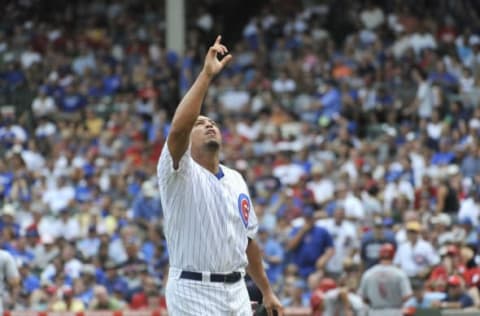
Here we count down the greatest Chicago Cubs of the 2010s, starting with numbers 50-41 as we work our way toward the decade’s best.
The 2010s featured both the lowest of lows and the highest of highs for Chicago Cubs fans. The decade started with the end of the Jim Hendry era, in which the former General Manager made a couple of last-ditch efforts to turn a failing franchise around. It didn’t work out, however, as the team finished under .500 in both 2010 and 2011.
Then, Theo Epstein took over before the 2012 season and made sweeping changes. The franchise bottomed out in 2012, as the team started its painful rebuild and finished 61-101. The team slowly improved over the next few years before the front office brought Joe Maddon in to manage the up-and-coming roster. With a few big additions, the Cubs went 97-65 in 2015 and made it all the way to the National League Championship Series.
With some more tweaks to the roster, the team went 103-58 in 2016 and survived a tough postseason to win their first World Series championship in 108 years. The rest of the decade, by Chicago Cubs standards, was pretty good, as the team finished over .500 every year and made the postseason two additional times.
Along the way during this past decade, we’ve seen many great players come and go through the North Side of Chicago. Putting together a list of the 50 greatest was a challenge, as players played varying amount of years with the team and contributed in different ways, both on and off the field. However, after much work, I have put together my list. Today, we start with numbers 50-41.
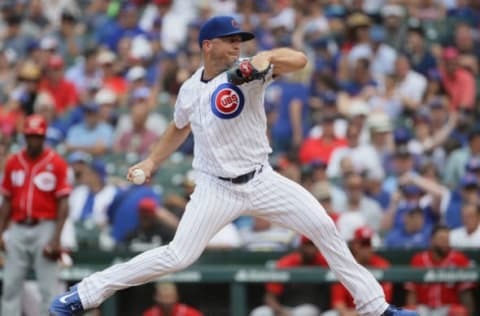
Chicago Cubs: No. 50: Brandon Kintzler
Brandon Kintzler started his career by finding success out of the Milwaukee Brewers bullpen between 2010 and 2015. In 2016, he went to the Minnesota Twins and became their closer, posting 45 saves in less than two years before being traded to the Washington Nationals. In Washington, Kintzler went back to being a setup man and did a decent job for them.
The Chicago Cubs traded for Kintzler in the middle of the 2018 season, and things did not go well for him in Chicago that year: In 18 innings, he gave up 14 earned runs. The Cubs declined their team option on the veteran, but Kintzler opted in via his player option – keeping him in the Windy City for another year.
He did turn things around in a big way in 2019. In 57 innings spanning 62 appearances, Kintzler posted a career-best 2.68 ERA. In one stretch, between May 21 and July 16, Kintzler made 19 appearances, pitching 17 1/3 innings and did not allow a single earned run during that entire time. Overall, Kintzler earned 17 holds on the season.
Kintzler is due to become a free agent this winter. I recently wrote a piece describing the difficulty the Cubs will have in building a bullpen this winter for the 2020 season, and in it, I mentioned that bringing Kintzler back for next year would be tough because of the contract he’s likely to demand.
However, if the Cubs can afford it, they would be wise to try to bring him back and see if he can replicate his 2019 success.
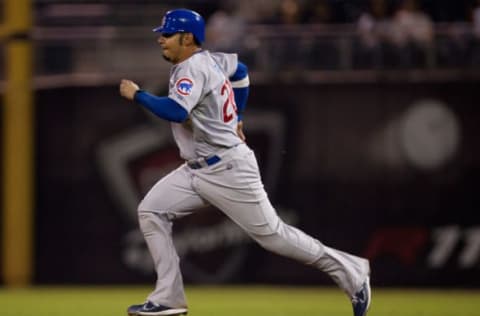
Chicago Cubs: No. 49: Carlos Pena
Carlos Pena was a first-round draft pick of the Texas Rangers in 1998. He came with high expectations, yet his big league career got off to a slow start as he bounced around from Texas to Oakland to Detroit to Boston before landing in Tampa Bay and finally taking off. In 2007, Pena broke out by hitting 46 home runs, driving in 121 and posting a 1.037 OPS, good for ninth in American Leauge MVP voting.
That would be Pena’s best season, and while he would continue to hit for power over the next three years with the Rays, his batting average dipped every year, from .282 in 2007 to .247 to .227 all the way down to .196 in 2010. Pena then became a free agent, and Cubs GM Jim Hendry, desperate for a left-handed hitting first baseman with the departure of Derrek Lee, signed Pena to a one-year deal.
As expected, given the low batting average, the Pena deal was met with plenty of skepticism. However, Pena, wasn’t too bad in his only season with the Cubs in 2011, hitting 27 doubles and 28 home runs while driving in 80. He also walked 101 times and brought his former Gold Glove-winning defense to the Cubs infield.
Pena returned to the Rays in 2012, where his batting average again fell below the .200 mark. He bounced around a couple more years before his career quickly fizzled out. We can now find Pena on MLB Network, where he serves as an analyst.
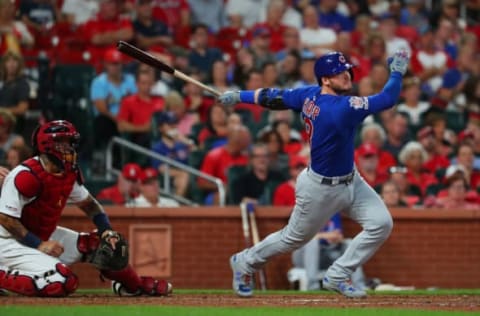
Chicago Cubs: No. 48: Ian Happ
The Chicago Cubs drafted Ian Happ with the ninth overall pick in the 2015 draft. On May 13, 2017, he made his big league debut with the Cubs in St. Louis against the Cardinals, when he went 1-for-3 with a walk and a home run. I was among those who thought that the Cubs brought Happ to the big leagues a little too early, though they were looking for a spark, struggling to stay above .500 a year after winning the World Series.
With the Cubs graduating several great players to the major leagues over the previous few seasons, Happ was supposed to be next in line. Over the last three seasons, he’s shown some signs of being a solid major league player but has yet to put it all together. Happ didn’t do too badly in his first year in 2017, as he posted an .842 OPS in 115 games while slugging 24 home runs and driving in 68, good for eighth in National League Rookie of the Year voting.
However, Happ took a step back in 2018. Despite getting the chance to play in 142 games, Happ saw his OPS plunge to .761. He then started the 2019 season in the minors and spent much of the year there before getting called back up on July 26.
He started off slow but turned it on toward the end of the season and hit 11 home runs in just 58 games while posting a solid .898 OPS. With the Cubs’ rash of injuries towards the end of the season, Happ proved valuable in his ability to play first, second, third, and outfield.
With a great ending to the 2019 season, Happ showed a lot of potential and could serve at least as a solid utility player starting in 2020. If he continues to show improvement, Happ will be much higher on the list of the greatest Cubs of the 2020s.
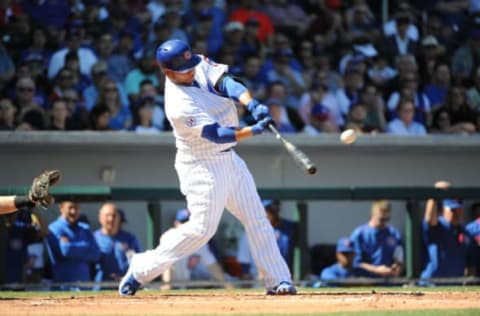
Chicago Cubs: No. 47: Welington Castillo
A lot of Chicago Cubs fans have long since forgotten about many of the players from the 2010-2014 era. Yet many of the diehards out there probably remember the impact that Welington Castillo made, particularly in the 2013 and 2014 seasons.
Castillo signed as an undrafted free agent with the Cubs in 2004, and he finally made it to the majors with a couple of brief stints with the Cubs in 2010 and 2011. By the end of 2012, Castillo had become the Cubs’ main catcher, posting a .754 OPS while playing excellent defense behind the plate. Then, in 2013, over a full season he posted a .746 OPS while posting a tremendous 2.3 WAR on defense.
Castillo followed that up with another solid year in 2014, hitting 13 home runs and driving in 46 while having another solid defensive season. In the three years from 2012 to 2014, Castillo posted a 6.4 WAR overall.
Castillo started the 2015 season on the Cubs roster, though it was clear he didn’t have much of a future with the big league club after they had acquired both Miguel Montero and David Ross during the offseason. Sure enough, after he played in just 24 games early in the season, the Cubs traded Castillo to the Seattle Mariners.
The backstop battled through injuries in 2019 as a member of the Chicago White Sox and will test free agency this offseason. He’s also spent time with the Arizona Diamondbacks and Baltimore Orioles and has been a solid offensive and defensive catcher everywhere he’s been.
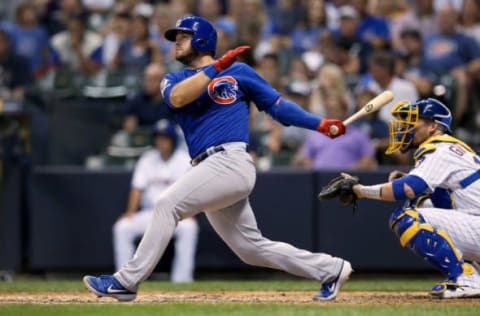
Chicago Cubs: No. 46 – David Bote
The Chicago Cubs drafted David Bote in the 18th round of the 2012 draft. Coming into spring training in 2018, Bote had had a solid but unspectacular minor league career, and there was little reason to believe that he would be much of an impact player in the organization. However, Bote impressed in spring training that year and earned a call-up early in the season.
Early on, Bote showed some signs of being a decent bench player. Yet Bote would become a fan favorite due to his late-inning heroics later in the season. On July 26, against the Arizona Diamondbacks, Bote hit a game-tying two-run home run in the bottom of the ninth. (Anthony Rizzo would later hit a home run to win the game.)
But his real signature moment would come on Sunday Night Baseball on August 12 against the Washington Nationals. Down 3-0, with two outs, Bote came up with the bases loaded. Down to his last strike, Bote deposited one well over the wall in center field: a walk-off grand slam to give the Cubs a 4-3 win. On the year in 2018, Bote batted .239 with six home runs and 33 RBI.
The Cubs surprised a lot of people by signing Bote to a five-year extension at the beginning of the 2019 season, as they must have felt that he could be a contributor for a long time. Bote did contribute again in 2019, as he raised his OPS from .727 to .785 while playing second base, third base and shortstop in part-time duty. His signature game of 2019 came on June 5 against the Colorado Rockies, a 9-8 Cubs win in which he drove in seven runs.
Given that Bote is signed long-term, expect him to have plenty of chances to climb up this list in the 2020s.
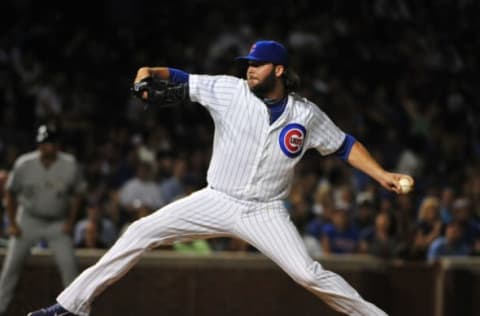
Chicago Cubs: No. 45 – James Russell
James Russell was a big part of the Chicago Cubs bullpen during the first half of the decade. He was drafted by the Seattle Mariners twice, once in 2004 and once in 2005, but did not sign either time. Then, in 2007, the Cubs drafted him in the 14th round, and he did sign. He made his big league debut with the Cubs in 2010.
Russell was just okay in his first season with the Cubs, posting a 4.96 ERA in 57 games, covering 49 innings out of the bullpen. As a left-hander, he was a lot more effective against left-handed hitting, holding them to a .238/.276/.450 line. In 2011, Russell got five starts and was not good, posting a 9.33 ERA, but in relief he was terrific, posting a 2.19 ERA in 59 games covering 49 1/3 innings. Again, he was better against left-handers.
Russell would put together two more solid years with the Cubs in 2012 and 2013, posting a 3.25 and 3.59 ERA, respectively, while making over 70 appearances both times. Then, in 2014, he made 44 appearances and put up a 3.51 ERA before being traded to the Atlanta Braves in the trade that brought Victor Caratini to the Cubs.
Russell came back to the Cubs in 2015 and post a 5.29 ERA in 49 games. After that, he briefly appeared with the Phillies in 2016, and that would be his last year in the majors. With lots of bullpen turnover early in the decade, Russell was a reliable left-handed arm for the Cubs.
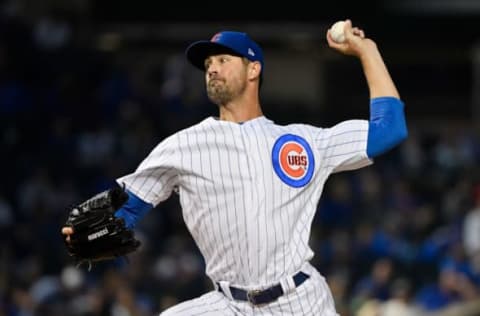
Chicago Cubs: No. 44 – Cole Hamels
By the time Cole Hamels came to the Chicago Cubs, he had already established himself as one of the best left-handed pitchers of his generation. He was a star with the Philadelphia Phillies for many years and was a part of their 2008 World Series championship team. Through the 2019 season, Hamels has 163 career wins and a career 3.42 ERA.
Before he came to the Cubs, Hamels was a part of Chicago Cubs history in a negative way. In his final start with the Phillies on July 25, 2015, before being traded to the Texas Rangers, Hamels threw a no-hitter at Wrigley Field against the Cubs. It was the first time the Cubs had been no-hit since September 9, 1965, when Sandy Koufax threw a perfect game against them.
Hamels’ career had slowed down by the time the Cubs traded for him from the Rangers during the 2018 season. He had posted a 4.72 ERA in 20 starts, and it looked like Hamels would be nothing more than an experienced number five starter addition to the rotation. However, he put up a tremendous 2.36 ERA in 12 starts, helping lead the Cubs into the postseason.
The veteran southpaw once again turned in a solid campaign in 2019, though it was a tale of two halves. In the first half, he posted a 2.98 ERA in 17 starts before going on the injured list. When he returned, he wasn’t nearly as good, posting a 5.79 ERA in 10 starts. He finished the year strong, throwing four scoreless innings in his last start against the St. Louis Cardinals.
There’s a good chance Hamels won’t be back in 2020, as he’s a free agent. The Cubs could conceivably make a qualifying offer, though it’s likely that they won’t.
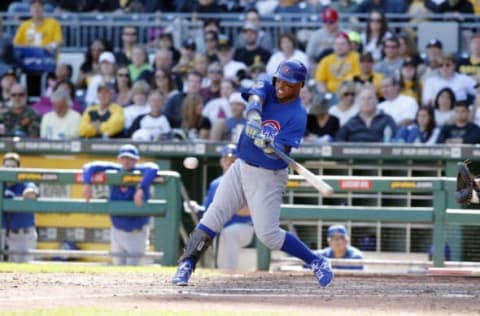
Chicago Cubs: No. 43 – Luis Valbuena
Luis Valbuena is another mainstay from the rebuilding years of 2012-2014. Although he wasn’t around for the winning years, he still had a decent three-year run in Chicago.
Valbuena debuted with the Seattle Mariners in 2008 and was traded to the Cleveland Indians for the 2009 season. He had a decent 2009 in 103 games, hitting 25 doubles and 10 home runs. However, it didn’t go as well over the next two years, and after the 2011 season he was sold to the Toronto Blue Jays, then claimed off waivers by the Cubs.
Valbuena served as a solid part-time player in 2012 and 2013, but his biggest season with the Cubs was in 2014, when he played almost every day as the third baseman. In 149 games, he slugged .435, hitting 33 doubles and 16 home runs while driving in 51. Indeed, Valbuena filled in admirably while the organization waited for the highly-touted Kris Bryant to arrive to the big leagues.
Before the 2015 season, with Bryant about ready for the majors, the Cubs traded Valbuena along with pitcher Dan Straily to the Houston Astros for future hero and fan favorite Dexter Fowler. Valbuena hit for more power in Houston, slugging 38 homers in two seasons there. He then spent his final two years in the majors with the Los Angeles Angels, where he hit another 31 homers.
Unfortunately, the Valbuena story has a sad ending. After finishing his major league career, Valubena was playing in a Venezuelan league when he, along with another former major leaguer, Jose Castillo, was killed in a car crash in December of 2018. According to former teammate Anthony Rizzo, “Valbuena was an amazing teammate and friend and will be sincerely missed.”

Chicago Cubs: No. 42 – Jorge Soler
Jorge Soler was supposed to be part of the crop of up-and-coming young players that formed the Cubs’ core as they began their rebuild under Theo Epstein, along with Anthony Rizzo, Kris Bryant, Kyle Schwarber, and Addison Russell. It didn’t quite work out with the Cubs, but Soler still made some contributions to the Cubs in the middle part of the decade.
More from Cubbies Crib
- Cubs starting pitching has been thriving on the North Side
- Make no mistake: the Cubs are very much about power hitters
- Cubs are giving pitcher Javier Assad a deserved shot
- Cubs: It’s time to start thinking about potential September call-ups
- Cubs: P.J. Higgins deserves to be in the lineup on a daily basis
The Cubs signed Soler as a free agent in June of 2012, as several teams were competing for his services. Still, giving a nine-year contract to an unproven player was considered a big risk by many. After a couple solid minor league seasons, Soler earned a call-up in late 2014 and impressed, hitting eight doubles and five home runs while driving in 20 and batting .292 in just 24 games.
Over the next two years, Soler was given the opportunity to earn everyday playing time, and though he did contribute on offense, he didn’t live up to expectations and also was subpar on defense. In 101 games in 2015, Soler hit 10 home runs and drove in 47. Then in 86 games in 2016, he hit 12 home runs and drove in 31.
Deciding that Soler just wasn’t working out, the Cubs decided to trade him to the Kansas City Royals for closer Wade Davis. Soler floundered in Kansas City for a couple of seasons before finally busting through in a big way in 2019, leading the league with a whopping 48 home runs.
Despite not being the star that everyone was hoping for with the Cubs, Soler will always be remembered for being a part of the 2015 and 2016 squads. Though success came later elsewhere, he’ll always be remembered for that.
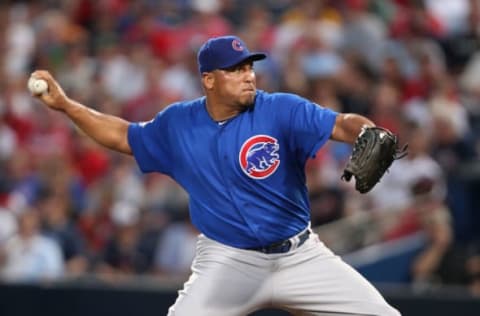
Chicago Cubs: No. 41 – Carlos Zambrano
Overall, Carlos Zambrano had a good career with the Cubs. Yet it seems like he didn’t live up to his potential, that he could have been so much better, especially if he had been able to stay in command of his emotions.
While it was Kerry Wood and Mark Prior who got all the headlines for the up-and-coming Chicago Cubs rotation in the early 2000s, it was Zambrano who had the most established career, as the other two were injured too much to live up to expectations.
Zambrano’s first full season was in 2002, while he had a breakthrough in 2003 as a full-time starter for the first time, posting a 3.11 ERA in 32 starts for the National League Central champions.
Between 2004 and 2008, Zambrano had an ERA under 4.00 and won at least 14 games every year. By the time 2010 rolled around, Wood and Prior were long gone (though Wood would return to the Cubs as a middle reliever in 2011) and only Zambrano remained among the big three. Zambrano had a solid 2010, splitting time between the bullpen and the starting rotation, posting a 3.33 ERA, his lowest since 2005.
Next. . dark
In 2011, Zambrano pitched in his final year with the Cubs, posting a 4.82 ERA and nine wins in 24 starts. He was one of many Cubs who left as part of the rebuild that started in 2012. Zambrano pitched one year with the Miami Marlins before his career fizzled out at just 31 years old.
He made headlines earlier this year when he attempted a comeback, pitching for the Chicago Dogs of the American Association. It remains to be seen whether he’ll get another shot in the major leagues.